#Linnea Axelsson
Text
A multi-generational saga courses across the pages of Ædnan, by Sámi-Swedish author Linnea Axelsson, translated from the Swedish by Saskia Vogel. The verse epic follows an Indigenous Sámi family who have herded reindeer for generations, as the forces of colonialism and modern development of their ancestral lands threaten their culture and livelihood. The story is told by a small chorus of characters from the 1910s through the current day, and we become especially close to Lise, who left her Sámi family, following her brother Jon-Henrik, to be educated at a residential school for “Nomad” children. This excerpt from Chapter XII takes place in the early 1970s, along the Great Lule River Valley, where the state-owned Vattenfall company was developing hydroelectric resources, and Lise is graduating into a world unimaginable to her parents.
. .
The river climbed
silently up the hills
as soon as Vattenfall
whistled it came
creeping:
–
Streamed backwards
up its deep channel and
drowned the earth
When the great
Suorva Dam for the third
time was to be regulated
–
Entreaty
shone from Mama’s
eyes
–
She explained
clearly to the Swedes
that the fishing will suffer
if the water rises
–
There was probably
no one who understood
what she was saying
– –
After the social
studies lesson
I went with the others
to sit on the
gymnasium floor
–
Almost all of
Malmberget’s students
had been dismissed
from class
–
To participate
in the miners’
strike meeting
–
Someone had heard
that Olof Palme
was coming
that he would travel
all the way up here
–
To the mining company’s
and Vattenfall’s world
the one that he
himself had helped
build
–
It is what
he is guarding
It is all that
he can see
–
The mine boss’s voice
flowed wildly above the
crowded hall which was
hot with bodies
–
His voice was so robust
his conviction
so intense
–
I glanced at Anne
who was sitting beside me
leaning against
the wall bars
and she smiled back at me
–
Soon we would
be leaving school too
–
And could start working
join the union
–
You took the job you wanted
that’s all there was to it
–
Switchboard cleaner or cook
with the old folks at
the Pioneer
or the children
in day care
– –
I spend the weekend
up at Mama
and Papa’s
–
I stand with Jon-Henrik
–
Watching the river
flow murky
across the slope
–
That brushy slope
where he and I
used to go
it’s underwater now
–
How are our tracks
ever to be heard
Among the Swedes’
roads and
power stations
–
It’s Jon-Henrik
who says this
he had also
been drawn down
to the dam
–
To work
for Vattenfall as soon
as school was done
–
I’m surprised
when he says
That he’d preferred to have
taken up with the reindeer
–
Been elected into the
Sámi community
And learned to guide
that wandering gray
soft ocean
across the world
of the fells
–
Just as the lot of us
were once taught
at the Nomad School
that this is what the Sámi do
that this is how
we all live
–
He laughs
and says:
–
Who knows what
the spring flood
will bring with it
this drowned
earth may yet
be fertile
More on this book and author:
Learn more about Ædnan by Linnea Axelsson.
Check out The Rumpus for a conversation between Linnea Axelsson and Susan Devan Harness about Axelsson's Sámi heritage and the decision to write Ædnan in verse.
Click here to read Linnea Axelsson's op-ed piece for LitHub on Scandinavia’s hidden history of Indigenous oppression.
Visit our Tumblr to peruse poems, audio recordings, and broadsides in the Knopf poem-a-day series.
To share the poem-a-day experience with friends, pass along this link.
#AxelssonAudio#poetry#poem-a-day#knopf poetry#national poetry month#knopfpoetry#poem#Aednan#Linnea Axelsson
13 notes
·
View notes
Text
How am I to
tell stories about life
…………………………
How am I to
explain to them
that the ruin
is in my voice
—Linnea Axelsson, Ædnan
0 notes
Text
0 notes
Text
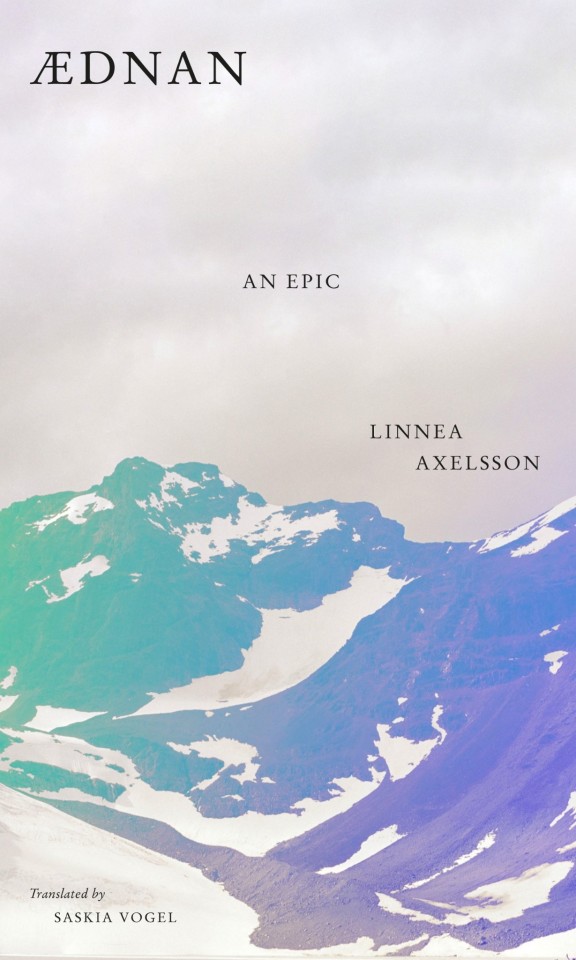
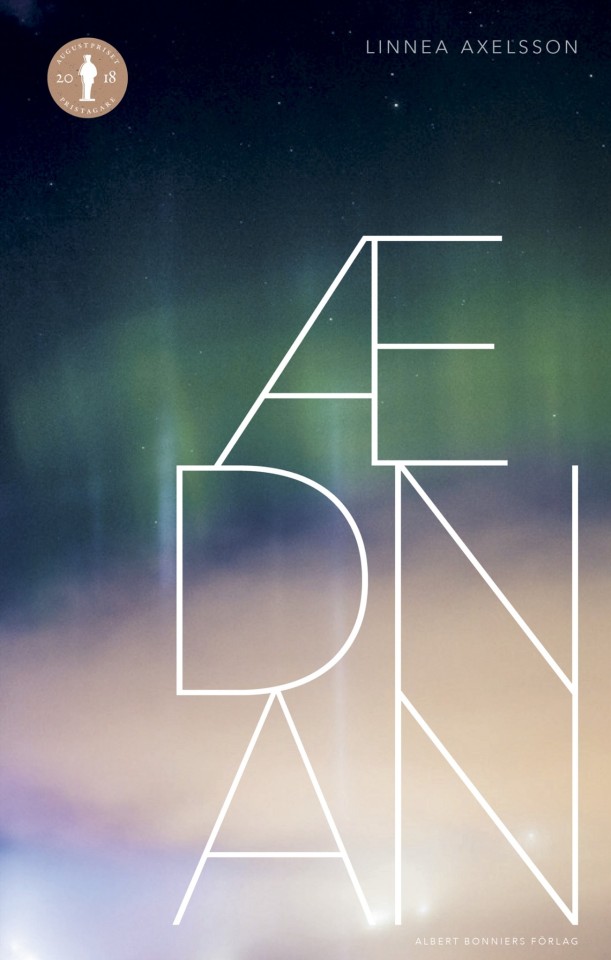
1 note
·
View note
Text

For many people, "epic poem" means epic story told in verse; think "The Odyssey." But Linnea Axelsson's epic poem "Ædnan: An Epic" is a real world story with political and social ramifications, as I learned when we did this exclusive interview.
https://paulsemel.com/exclusive-interview-aednan-an-epic-author-linnea-axelsson/
📖🇸🇪
#LinneaAxelsson#LinneaAxelssonInterview#LinneaAxelssonÆdnanAnEpic#LinneaAxelssonÆdnanAnEpicInterview#LinneaAxelssonÆdnan#LinneaAxelssonÆdnanInterview#LinneaAxelssonAednanAnEpic#LinneaAxelssonAednanAnEpicInterview#LinneaAxelssonAednan#LinneaAxelssonAednanInterview#Books#Reading#AuthorInterview#AuthorInterviews#Poems#Poetry#EpicPoetry#EpicPoems
1 note
·
View note
Text
Ædnan by Linnea Axelsson: “Crystalline prose that reads like poetry and myth at once.”
Beautiful, unique and tragic, I've never read a story quite like Ædnan and I cannot stop thinking about it.
Ædnan is a lyrical story of the Sámi people. It’s told by five generations of the same family covering a hundred years of their tragic history, their losing struggle to continue their nomadic lifestyle.
In Northern Sámi, the word Ædnan means the land, the earth, and my mother. Axelsson’s family epic begins in the early spring of 1913 with Ber-Joná expressing his love for their rangeland that runs…
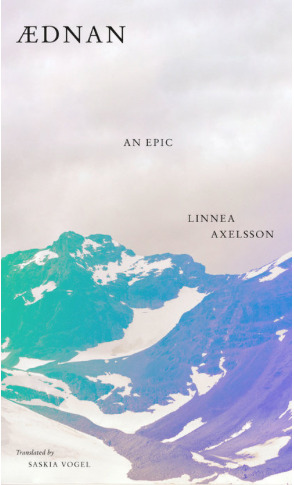
View On WordPress
0 notes
Link

2 notes
·
View notes
Note
any poetry recommendations?
Aednan by Linnea Axelsson. A saami, indigenous family epos that made me cry in that way you cry when an infected wound of history is being rightfully torn open.
4 notes
·
View notes
Text
Sámi Theatre in Sweden
Sweden’s main Sami theatre is the Giron Sámi Teáhter, based in Kiruna. The roots of the company were in a group called Dálvadis, a free touring company that performed in Sami around Scandinavia, Europe, and Canada. It morphed into the Sami Teáhter in 1992, and gained its current name in 2009. The goal, which is an overlapping theme between many indigenous theatre companies around the world, “is to carry out professional performing arts based on the Sami culture and identity and to promote the Sámi languages by raising current issues.” The majority of the plays are written or devised by Sami playwrights and directors, geared toward Sami people but performed in both Sami and Swedish. They do shows geared at every age group and host seminars bridging the gap between science and the performing arts (as, like I said before, the Sami are a very environmentally-conscious people group).
Their two most recent (intended, although COVID-19 has hindered their going on) productions display the diverse ways they go about promoting Sami culture perfectly. One is Ædnan, a play based on the prize-winning 2018 novel of the same name by Linnea Axelsson. With six actors, the play focuses on three generations of Sami women in Sweden from the early twentieth century through the present day. It details their resilience in the face of forced assimilation and removal from their lands, the loss of their native language, and the question of what exactly qualifies as “Swedishness.” On the other hand, there’s Language Circus, which is a show aimed at making learning Sami fun for children. Guided by a clown, an actor, and a Sami linguist, children engage in fun activities like clowning and acrobatics as a way to make learning the language fun. After all, as the show description says, “Being a beginner gets easier if learning means being funny and crazy.” While there is a certain sadness to it (like asking how the body can be used to convey grief at losing one’s language), it is mostly intended to make Sami culture and language fun, approachable, and easy to engage with.
Besides the Giron Sámi Teáhter, there is also an annual tradition in Jukkasjarvi (725 miles north of Stockholm, Sweden’s capital city) to build an ice replica of Shakespeare’s Globe Theatre - fittingly enough, called the Ice Globe. They’ve famously performed Shakespeare plays like Macbeth and Hamlet in Sami, albeit shortened and in modern dress. Why shortened? As the Ice Globe’s manager Rolf Degerlund put it, “At minus 38, it is impossible to stand outside for four hours.” (There is, in fact, a filmed version of Macbeth in Sami, but tragically I haven’t been able to find it.)
Watch a trailer for Ædnan below:
http://mediabank.riksteatern.se/blog/tag/aednan
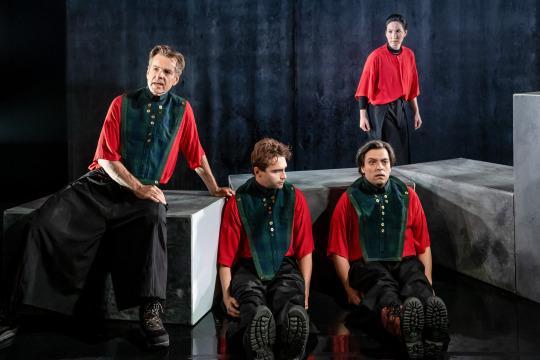
#sweden#sami#sami theatre#giron sami teahter#indigenous theatre#indigenous culture#aednan#jukkasjärvi#kiruna#arcticlife
2 notes
·
View notes
Text
Att läsa Aednan ovan polcirkeln - tankar kring Aednan av Linnea Axelsson
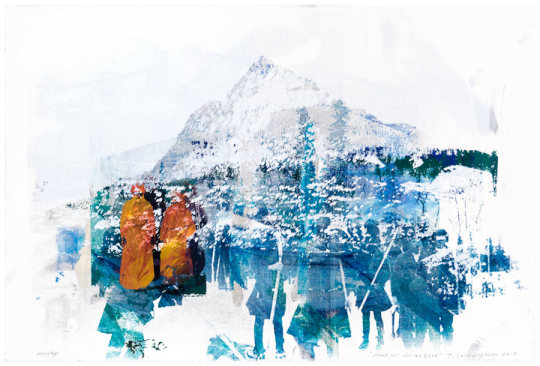
Under det hellige berg av Tomas Colbengtson
Jag tvingas läsa Aednan på nära håll. Jag känner igen dammen och Porjus/Bårjås, återskapar platserna i minnet, och ännu mer känner jag igen människorna, tankarna. Ibland stannar jag upp och undrar hur den här boken vet så mycket om mig, om min familj, om oss. Likheten i så många av våra öden slår mig, hur där alltid finns samma fasta punkter att orientera sig från: markerna, språket och den skam och längtan det kopplats till, identiteten och att förlora den och hitta den, rasbiologin, ilskan och aktivismen. Gruvorna, dammarna och kraftverken som stora sår i kartans marker, i det samiska medvetandet. Vattenkraft. Girjasmålet. Vi har liksom alla fått samma kartor att läsa världen med. Jag läser Aednan resandes, på väg bort från lulesamisk mark, på väg hem och hemifrån samtidigt. Jag blir annorlunda där uppe, säkrare, stadigare. I Stockholm är det svårare, jag känner hur jag vinglar när jag vill skriva om ett ”vi”. Nu gör jag det ändå.
”Det var i ett klassrum
i Malmberget
-
Jag hörde läraren
än en gång berätta
om folkhemmet
och Sveriges
berömda solidaritet
-
Medan mamma
och pappa fick
klättra i backarna
Försöka gissa hur
högt upp älven
skulle stiga
innan de började
riva huset”
- Ur Aednan, Linnea Axelsson
Aednan, det äldre nordsamiska ordet för marken som i mitt rättstavningsprogram följs åt av ett argt rött streck, är namnet på Linnea Axelssons nya diktepos, två släktsagor som sträcker sig över hundra år, från tvångsförflyttningen av Karesuandosamer till Girjas samebys stämning av svenska staten. Ordet ”diktepos” för lätt med sig förväntningar om tyngd, något ogenomträngligt som bäst överlåtes till professorer i antika språk, men Aednan är välkomnande och rytmen går fint att komma in i.

Silverfjället av Tomas Colbengtson
Det finns en väldigt drömsk kvalitet i Aednan som är tydlig i bokens början, någonting uråldrigt och samtidigt så nära, men även i nutidsdelarnas vardagliga gång ekar spåren av det, som ett till hälften bortträngt minne som nu mest bara känns i kroppen. Karaktärer och minnesbilder rör sig in och ut ur tidslinjen, och här är det tydligt: nutiden bär alltid gårdagen med sig, ingenting står utan sin historia. Det är ett viktigt drag, för det är genom kontext och historia som vi kan se det inneboende våldet i händelser som annars får slippa undan. Det är genom historiens ögon som en nedbränd kåta blir mer än bara en hög med aska.
”Ni nordiska barn
som går fram så lätt
Som vore ni
helt utan makt
utan förflutet
-
De som gått före er
har visst glömt
att packa er ryggsäck”
- Ur Aednan av Linnea Axelsson
Jag tror att Aednan gav mig ännu en bit kraft, gav mig orken att veckla ut den där kartan, dra med fingret längs med floderna, försöka hitta punkten där jag är. Det finns en värme i att veta att vi är många som vandrat samma leder. Samlats på samma punkt. En del av mig undrar vart fan jag ska ta vägen nu. En annan minns att vi är många, och att vi leder varandra när föret blir svårt.
Utgåvan jag läste släpptes 2018 av Albert Bonniers förlag.
0 notes
Text
Am I that dumb
that I can’t manage
to keep my own
language alive
-
I just let it slip away
be driven from my children
—Linnea Axelsson, Ædnan
0 notes
Text
Linnea Axelsson "Ædnan" vinner Augustpriset
Linnea Axelsson “Ædnan” vinner Augustpriset
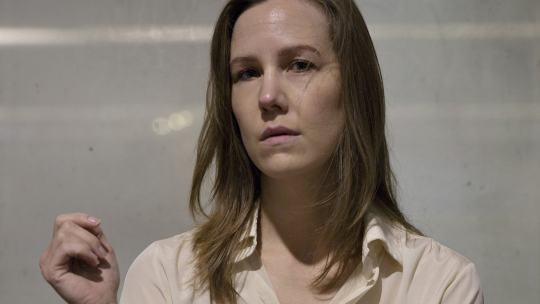
Årets vinnare av Augustpriset har utsetts. Stockholm. Magnus Västerbro har prisats för sin bok “Svälten” och Emma AdBåge för “Gropen”. P1 Kulturs Måns …
Read More
View On WordPress
0 notes
Photo
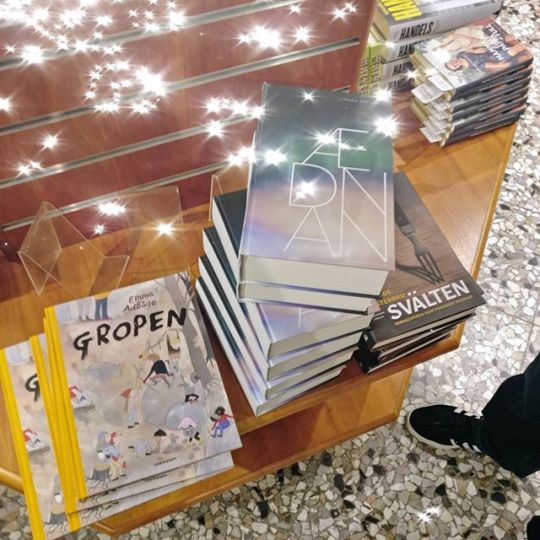
Härliga tider! Nu blir det omskyltning! Tre kanonbra Augustprisvinnare får podiet helt för sig själva. Linnea Axelssons "Ædnan" är tillfälligt slut hos Bonniers, så passa på och hugg den när du ser den!
0 notes